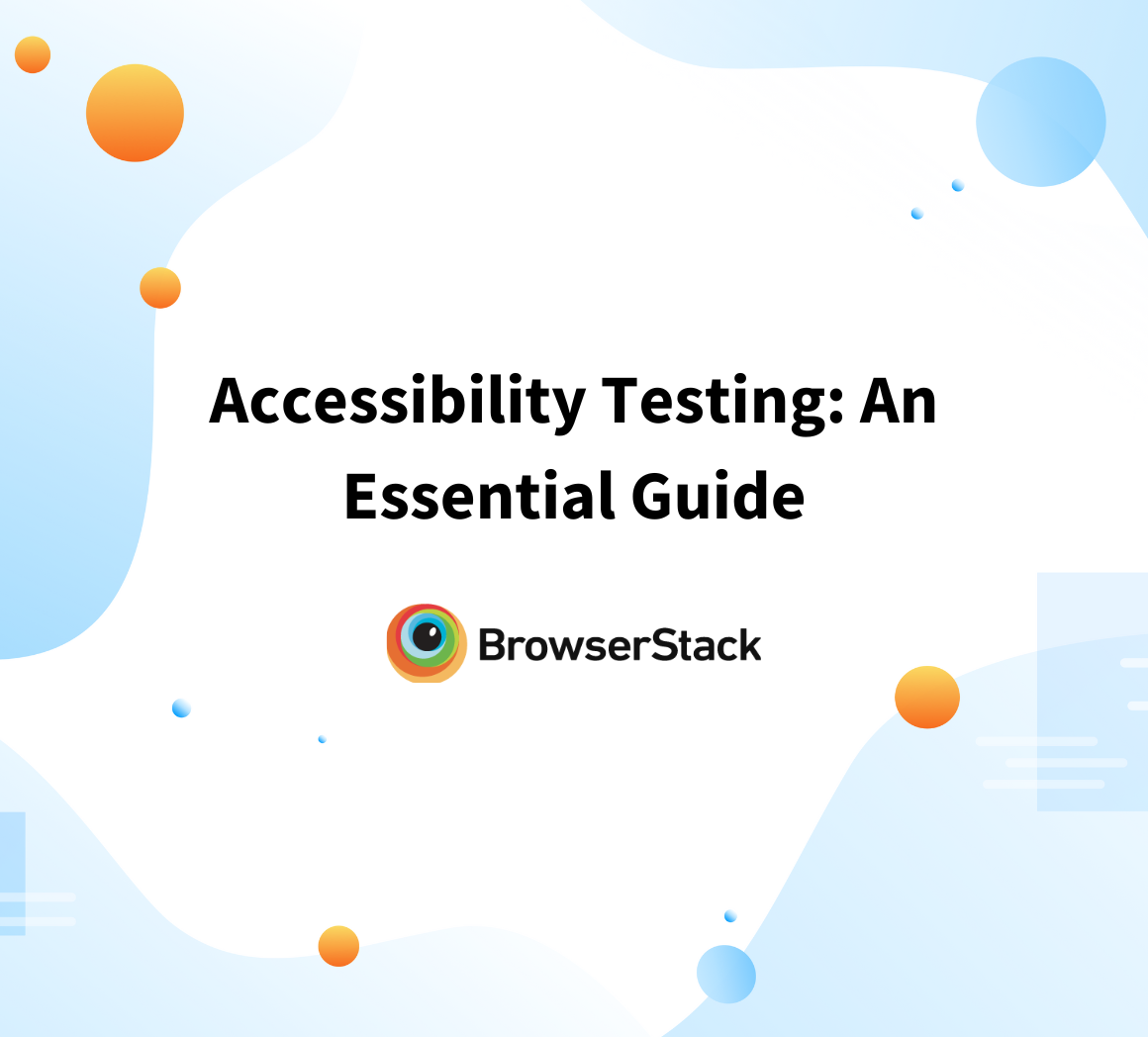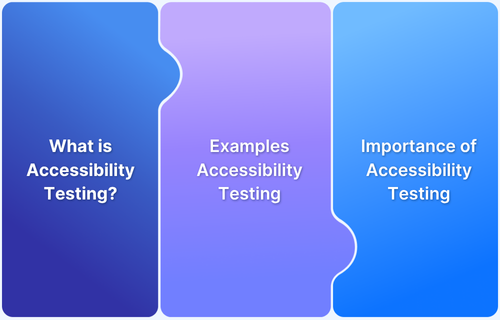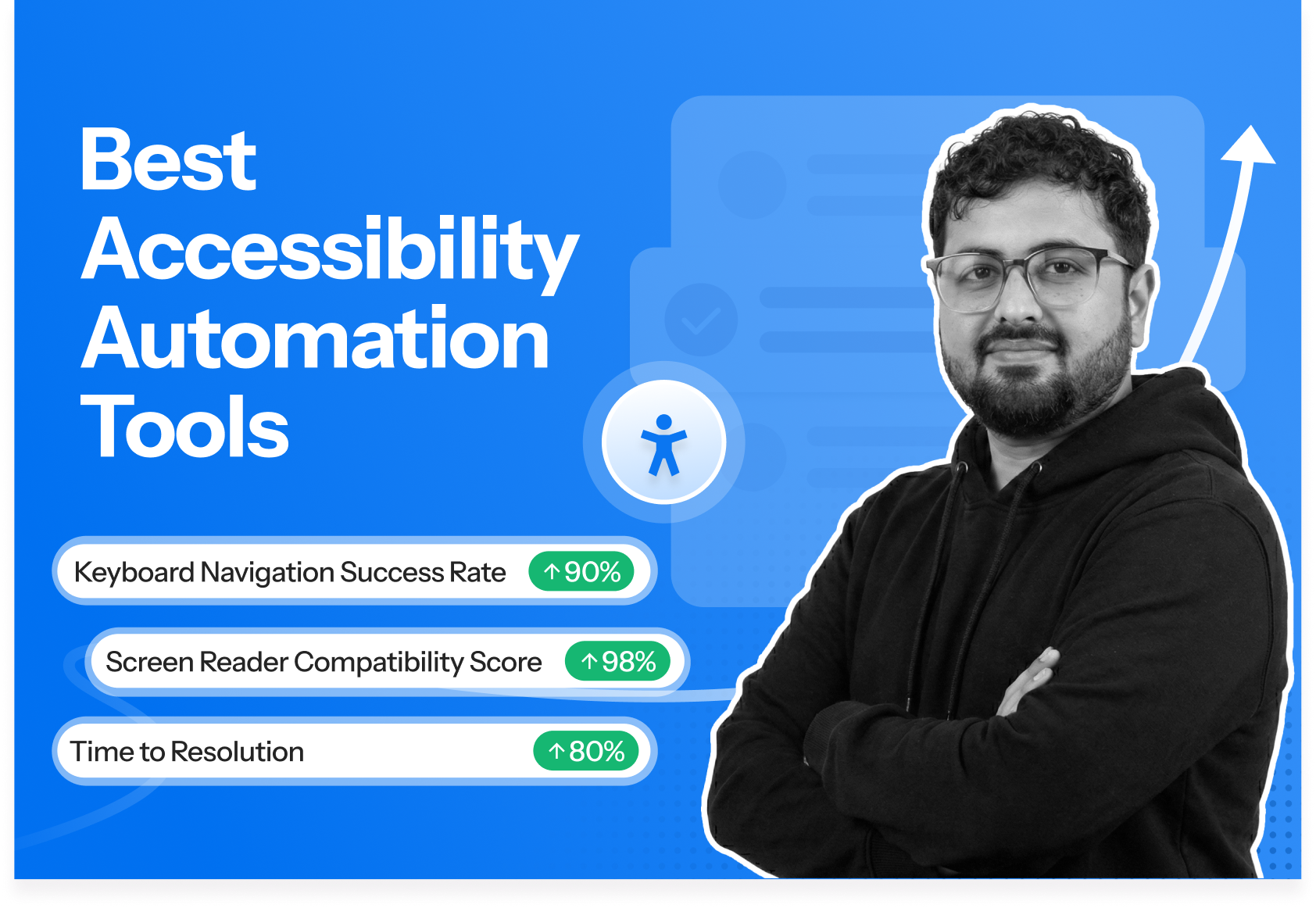Web content accessibility refers to the design and development of web content that can be easily accessed and used by all users, including those with disabilities. This encompasses a broad range of strategies, tools, and standards that ensure websites, applications, and other digital platforms are usable by individuals with diverse needs.
Overview
Core Principles of Web Content Accessibility
- Perceivable
- Operable
- Understandable
- Robust
Laws and Regulations for Maintaining Web Content Accessibility
- Americans with Disabilities Act (ADA)
- Section 508 of the Rehabilitation Act
- European Accessibility Act (EAA)
- Accessibility for Ontarians with Disabilities Act (AODA)
In this article, we will explore the key principles, standards, legal implications, testing tools, and best practices for implementing web content accessibility.
What is Web Content Accessibility?
Web content accessibility refers to the design of web content that ensures individuals with disabilities can access and navigate websites efficiently. Disabilities can range from visual, auditory, and motor impairments to cognitive and neurological conditions.
Web accessibility aims to create experiences where these users can perceive, understand, navigate, and interact with content in a way that is comparable to users without disabilities.
The goal is to design content that accommodates all users, regardless of their ability to interact with technology in traditional ways. For example, visually impaired users may rely on screen readers, and users with motor disabilities might need keyboard shortcuts instead of mouse clicks.
This approach not only addresses ethical and legal concerns but also enhances the overall usability of websites for all users.
Core Principles of Web Content Accessibility
Web content accessibility is governed by four core principles, which ensure that content is usable for people with various disabilities. These accessibility principles form the foundation of accessibility guidelines such as the Web Content Accessibility Guidelines (WCAG).
Perceivable
Content must be presented in a way that users can perceive, meaning it must be accessible through at least one of the human senses (sight, hearing, or touch).
This can involve providing text alternatives for non-text content (such as images, videos, or audio) and ensuring that different types of assistive technologies can easily perceive content.
Operable
Content must be operable, meaning users must be able to navigate and interact with it. This includes providing alternative ways to interact with content, such as keyboard navigation for users unable to use a mouse.
Websites should also be designed with sufficient time for users to complete tasks, preventing timeouts or forced navigation.
Understandable
Content must be understandable. It must be readable and predictable so that users can easily make sense of the information and interact with it.
This includes using clear and simple language, as well as consistent layouts that do not confuse users or lead to mistakes.
Robust
Content must be robust, meaning it should work reliably across different platforms and technologies, including browsers, screen readers, and other assistive devices.
This principle focuses on ensuring that content remains accessible as technology evolves and that future technologies can still interpret the web content.
Understanding WCAG 2.1 and WCAG 2.2
The Web Content Accessibility Guidelines (WCAG) are the international standards for web accessibility. These guidelines are developed by the Web Accessibility Initiative (WAI) of the World Wide Web Consortium (W3C). WCAG provides specific instructions on how to make web content more accessible to people with disabilities.
Overview of WCAG 2.1
WCAG 2.1 builds on WCAG 2.0 and introduces additional criteria to address accessibility issues that became more prominent with the rise of mobile devices. The guidelines provide 13 additional success criteria aimed at improving mobile accessibility, content on small screens, and the experiences of people with cognitive or learning disabilities.
WCAG 2.1 covers the same four principles as mentioned earlier: Perceivable, Operable, Understandable, and Robust (POUR), and includes specific recommendations and techniques to address a wide range of disabilities.
Key Updates in WCAG 2.2
WCAG 2.2 is the latest version, which adds even more criteria to improve accessibility. While still in the draft stage, the proposed changes further refine mobile and cognitive accessibility. Some of the updates focus on improving the ability for users to customize their experience, such as clearer contrast ratios and better focus management for keyboard users. These updates aim to continue pushing the web accessibility landscape toward inclusivity and usability.
Conformance Levels: A, AA, AAA
WCAG outlines three conformance levels, which serve as a way to measure how accessible a website is:
- Level A: The most basic web accessibility features that must be met. Failing any Level A success criteria means the website is not accessible.
- Level AA: These criteria address major accessibility barriers. A site is considered fully accessible when it passes all Level AA criteria.
- Level AAA: These criteria are optional and address the highest level of accessibility. Meeting these criteria ensures the best possible experience for users with disabilities but is not always necessary for conformance.
Laws around the World for Web Content Accessibility
Web content accessibility is not just a technical consideration—it is also a legal requirement in many countries. These laws vary depending on the jurisdiction but are generally aimed at ensuring equal access to information and services for individuals with disabilities. Below are some of the key regulations that have shaped web accessibility standards.
Americans with Disabilities Act (ADA)
In the United States, the ADA mandates that public accommodations, including websites, must be accessible to individuals with disabilities. The law does not explicitly state web accessibility requirements but has been interpreted by courts to include websites as public accommodations.
Section 508 of the Rehabilitation Act
Section 508 requires federal agencies and contractors to make their websites and electronic content accessible to people with disabilities. It closely follows WCAG guidelines and has been updated to align with WCAG 2.0 and 2.1.
European Accessibility Act (EAA)
The EAA harmonizes accessibility laws across EU member states, requiring public sector websites and mobile apps to meet accessibility standards. It references WCAG 2.1 guidelines and outlines accessibility requirements for both public and private sectors.
Accessibility for Ontarians with Disabilities Act (AODA)
AODA is a Canadian law that mandates accessibility requirements for all public websites and digital content in Ontario. It requires websites to conform to WCAG standards by 2025.
Tools for Web Content Accessibility
To ensure websites comply with accessibility standards, developers must conduct thorough testing. There are several tools available to assist with this process, ranging from automated scanners to manual evaluation tools.
Below are some of the most effective tools for testing web content accessibility:
BrowserStack Accessibility
BrowserStack Accessibility is a cloud-based platform that allows developers to test web accessibility on real devices and browsers. It enables cross browser testing and cross-device testing, ensuring that websites remain accessible on various platforms, making it especially valuable for testing on different operating systems and mobile devices.
Key Features:
- Tests on over 3,500 real browsers and devices, beyond just Chrome and simulators
- Integrates directly into CI/CD workflows for early accessibility testing (shift-left testing)
- Detects visual issues with contextual guidance for faster remediation
- Supports ADA, WCAG 2.1/2.2, Section 508, and AODA compliance
- Provides collaborative workflows with test logs, reports, and role-based access
- Focuses on real accessibility, avoiding UI overlays or automated fixes
- Part of a comprehensive QA ecosystem used by over 50,000 development teams
- Powered by BrowserStack AI to prioritize fixes and flag recurring patterns in audits
- Enhanced by the Spectra Rule Engine, identifying edge-case issues missed by standard tools
- Includes a free website scanner tool for automated accessibility checks across pages, ensuring thorough evaluation of all web content.
AChecker
AChecker is an online accessibility testing tool that analyzes web pages for compliance with WCAG and other accessibility standards. It provides detailed feedback and identifies accessibility issues that can be addressed to ensure the site is usable for individuals with disabilities.
Key Features:
- WCAG 2.1, Section 508, and other accessibility guidelines support
- Customizable checking levels (Basic, Moderate, Strict)
- Generates detailed accessibility reports
- Provides suggestions for improving accessibility
- Free to use for testing individual web pages
Google Lighthouse
Google Lighthouse is an open-source tool that audits websites for performance, SEO, accessibility, and best practices. It generates detailed reports with actionable recommendations, making it one of the most popular tools for testing accessibility along with other aspects of a website.
Key Features:
- Provides accessibility scores based on WCAG criteria
- Detects issues like missing alt text, poor contrast, and focus management
- Generates detailed reports with insights and actionable recommendations
- Can be run via Chrome DevTools, command line, or Node.js
- Integrates with CI/CD pipelines for continuous testing
Pa11y
Pa11y is an accessibility testing tool that offers both automated and command-line interface (CLI) options to help developers evaluate their websites against WCAG guidelines. It is ideal for integrating accessibility checks into automated testing workflows and CI/CD pipelines.
Key Features:
- Automated testing and command-line interface support
- Integration with continuous integration (CI) tools
- Supports WCAG 2.0 and 2.1 compliance
- Generates detailed accessibility reports with suggestions for fixes
- Open-source and easy to integrate into development workflows
Common Barriers in Website Content
Despite the increasing emphasis on web accessibility, many websites still present barriers that prevent people with disabilities from accessing content effectively. Some of the most common barriers include:
- Lack of Alternative Text for Images: Images without alternative text (alt text) are inaccessible to visually impaired users who rely on screen readers to understand the content.
- Inadequate Keyboard Navigation: Websites that rely solely on mouse interactions create difficulties for users with motor disabilities. Proper keyboard shortcuts are essential.
- Poor Color Contrast: Insufficient contrast between text and background can make content unreadable for users with visual impairments or color blindness.
- Unclear or Complex Navigation: Websites with confusing navigation structures or inconsistent layouts can make it difficult for users, particularly those with cognitive impairments, to find what they need.
Best Practices for Implementing Web Accessibility
To create truly accessible websites, organizations must adopt a set of best practices that cover all aspects of design, development, and content creation.
These best practices ensure that accessibility is built into the website from the ground up rather than being added as an afterthought.
- Semantic HTML and ARIA Roles: Using semantic HTML ensures that web content is structured in a way that is easily interpreted by screen readers and other assistive technologies. ARIA (Accessible Rich Internet Applications) roles help enhance accessibility for dynamic content and complex user interfaces.
- Keyboard Accessibility: Ensure that all interactive elements, such as forms, buttons, and links, are accessible via keyboard alone. Keyboard navigation should be intuitive, and focus management should be clear and logical.
- Alternative Text for Images: Every image on a website should have descriptive alternative text that provides context and meaning for visually impaired users. This is crucial for both informative and decorative images.
- Accessible Forms and Inputs: Forms should include clear labels, error messages, and instructions. Users should be able to complete forms using a keyboard, and form fields should be logically arranged to ensure an efficient user experience.
- Video and Audio Accessibility: Provide captions and transcripts for audio and video content, as well as sign language interpretation where possible. This ensures that users with hearing impairments can access multimedia content.
Why choose BrowserStack for Web Content Accessibility Testing?
Web accessibility is a legal requirement, not just a checkbox. Non-compliance with standards like WCAG, ADA, and Section 508 can exclude users and result in legal consequences.
BrowserStack Accessibility tool helps you stay compliant with over 10 global accessibility laws, identifying gaps early to avoid costly fixes. Its Spectra engine detects 66% more issues than standard checkers, while 8X faster scans keep your CI/CD pipeline efficient.
Core Features of BrowserStack Accessibility Testing
- Automated Accessibility Tests: Runs fast, powerful tests on real devices and browsers to identify WCAG violations early.
- Workflow Analyzer: Tests multi-step user journeys like sign-ups and checkouts, ensuring accessibility beyond static pages.
- Real Screen Readers: Replicates real-world assistive tech by testing with NVDA and JAWS on actual devices.
- Assisted Tests: Guides manual testing for complex issues like keyboard traps and focus states.
- Central Reporting Dashboard: Unified view of accessibility issues across pages, projects, and teams for better collaboration.
- BrowserStack AI for Accessibility: Prioritizes and groups issues automatically, helping teams focus on critical fixes faster.
- Accessibility Design Toolkit: Validates color contrast, typography, and component choices during the design phase to ensure accessibility from the start.
Try BrowserStack Accessibility for Free
Conclusion
Web content accessibility is a critical aspect of creating an inclusive, user-friendly digital world. By understanding the core principles of accessibility, adhering to WCAG guidelines, and ensuring compliance with international laws, businesses can enhance the usability of their websites for all users.
Implementing best practices, using the right testing tools, and continually addressing common barriers will not only improve accessibility but also optimize the user experience and SEO performance.








